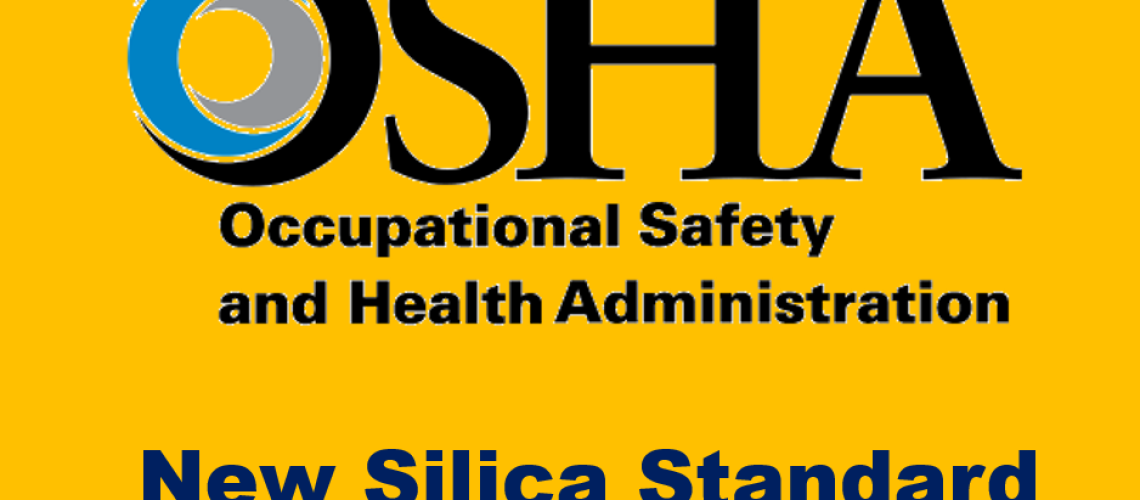On October 23, 2017, OSHA began full enforcement of the respirable crystalline silica (RCS) standard for construction (29 CFR 1926.1153). To comply with this standard we should make sure to:
- Get to know the Standard inside and out. Silica Standard Compliance Guide
- Implement the controls required of Table 1 activities.
- Have a written Silica Exposure Control Plan (ECP) and other relevant safety programs (Respiratory Protection Program, Hazardous Communication Program, etc.)
- Assign a Competent Person on each job site. (OSHA defines a competent person as someone who accepts the responsibility, has the training, and has the authority to make needed changes to ensure safety.)
- When Doing Table 1 activities without the suggested controls, the scheduled monitoring option will have to be implemented. (Personal breathing zone samples will have to be taken to ensure that the RCS exposure level is below the action level.)
- When doing work outside the scope of Table 1 activities, we can use the scheduled monitoring option (personal breathing zone sample will be taken) or the Performance monitoring option can be implemented (sample data from an outside source can be used as long as it was from the same work using the same materials.) When using data from outside source, have a copy on hand for occasions when we might be asked why we are not doing our own tests.
- When sweeping floors or dusting something off, we need to use sweeping compound and/or a vacuum with HEPA filtration.
- We need to make annual medical evaluations available to employees who wear or will be wearing a respirator for 30 or more in a year. (This applies per employer. Exposures from previous employers do not count towards 30 days)
New Drywall applications are exempt from this new standard because current gypsum panels and joint compounds now contain little or no RCS. Although we still need to keep an eye on the SDS on all products we use to ensure silica exposure will not reach the action level. Keep in mind if employees are disturbing old drywall, old plaster, or any other material other than new drywall panels or new joint compound, there will be an elevated risk. So pre-job existing material sampling and/or personal breathing zone sample may need to be taken.
Even though Drywall work is exempt, that doesn’t mean that there won’t be health threat from ingredients other than RCS. We should set strict companies policies that set rules for required PPE and Engineering Controls for every task employees might be doing. Some examples may be: Closing off and limiting access to areas where drywall is being sanded, require 100% use of respiratory protection when any worker is in an area being sanded, and running air handlers/scrubbers in an area being sanded.
When it comes to glazing and glass work, remember, silica is a key ingredient in the manufacturing of glass. The most severe exposures to crystalline silica result from abrasive blasting. This process is used to etch or frost glass. Additionally, crystalline silica exposure can occur in the maintenance, repair, and replacement of the linings of refractory brick furnaces, such as those used to manufacture glass. Most aspects of the glass trades will fall under Table 1 activities. Be mindful when cutting, chipping, grinding, or drilling into concrete, brick, or mortar.
It is the intention of the D.C. 6 and the FTIOR to stay as up to date as possible on this standard and its possible implications on our work. If we stay in constant communication and share our data as it comes out, we should have no problems staying in compliance.


